publications
2024
-
 Physics-Driven Autoregressive State Space Models for Medical Image ReconstructionBilal Kabas, Fuat Arslan, Valiyeh A. Nezhad, Saban Ozturk, Emine U. Saritas, and Tolga Çukur2024
Physics-Driven Autoregressive State Space Models for Medical Image ReconstructionBilal Kabas, Fuat Arslan, Valiyeh A. Nezhad, Saban Ozturk, Emine U. Saritas, and Tolga Çukur2024Medical image reconstruction from undersampled acquisitions is an ill-posed problem that involves inversion of the imaging operator linking measurement and image domains. In recent years, physics-driven (PD) models have gained prominence in learning-based reconstruction given their enhanced balance between efficiency and performance. For reconstruction, PD models cascade data-consistency modules that enforce fidelity to acquired data based on the imaging operator, with network modules that process feature maps to alleviate image artifacts due to undersampling. Success in artifact suppression inevitably depends on the ability of the network modules to tease apart artifacts from underlying tissue structures, both of which can manifest contextual relations over broad spatial scales. Convolutional modules that excel at capturing local correlations are relatively insensitive to non-local context. While transformers promise elevated sensitivity to non-local context, practical implementations often suffer from a suboptimal trade-off between local and non-local sensitivity due to intrinsic model complexity. Here, we introduce a novel physics-driven autoregressive state space model (MambaRoll) for enhanced fidelity in medical image reconstruction. In each cascade of an unrolled architecture, MambaRoll employs an autoregressive framework based on physics-driven state space modules (PSSM), where PSSMs efficiently aggregate contextual features at a given spatial scale while maintaining fidelity to acquired data, and autoregressive prediction of next-scale feature maps from earlier spatial scales enhance capture of multi-scale contextual features. Demonstrations on accelerated MRI and sparse-view CT reconstructions indicate that MambaRoll outperforms state-of-the-art PD methods based on convolutional, transformer and conventional SSM modules.
-
 I2I-Mamba: Multi-modal medical image synthesis via selective state space modelingOmer F. Atli, Bilal Kabas, Fuat Arslan, Mahmut Yurt, Onat Dalmaz, and Tolga Çukur2024
I2I-Mamba: Multi-modal medical image synthesis via selective state space modelingOmer F. Atli, Bilal Kabas, Fuat Arslan, Mahmut Yurt, Onat Dalmaz, and Tolga Çukur2024In recent years, deep learning models comprising transformer components have pushed the performance envelope in medical image synthesis tasks. Contrary to convolutional neural networks (CNNs) that use static, local filters, transformers use self-attention mechanisms to permit adaptive, non-local filtering to sensitively capture long-range context. However, this sensitivity comes at the expense of substantial model complexity, which can compromise learning efficacy particularly on relatively modest-sized imaging datasets. Here, we propose a novel adversarial model for multi-modal medical image synthesis, I2I-Mamba, that leverages selective state space modeling (SSM) to efficiently capture long-range context while maintaining local precision. To do this, I2I-Mamba injects channel-mixed Mamba (cmMamba) blocks in the bottleneck of a convolutional backbone. In cmMamba blocks, SSM layers are used to learn context across the spatial dimension and channel-mixing layers are used to learn context across the channel dimension of feature maps. Comprehensive demonstrations are reported for imputing missing images in multi-contrast MRI and MRI-CT protocols. Our results indicate that I2I-Mamba offers superior performance against state-of-the-art CNN- and transformer-based methods in synthesizing target-modality images.
-
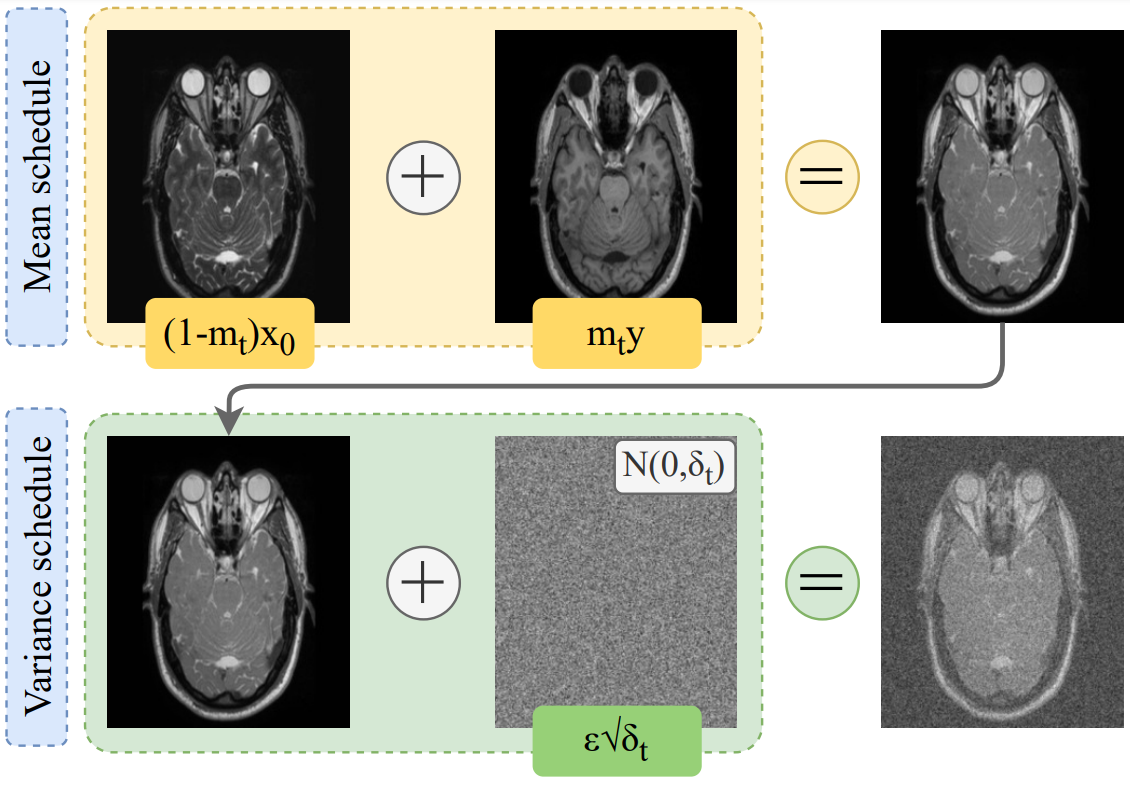 Multi-Contrast MR Image Synthesis with a Brownian Diffusion ModelBilal Kabas, Fuat Arslan, Valiyeh Ansarian Nezhad, and Tolga ÇukurIn 2024 32nd Signal Processing and Communications Applications Conference (SIU), 2024
Multi-Contrast MR Image Synthesis with a Brownian Diffusion ModelBilal Kabas, Fuat Arslan, Valiyeh Ansarian Nezhad, and Tolga ÇukurIn 2024 32nd Signal Processing and Communications Applications Conference (SIU), 2024Magnetic Resonance Imaging (MRI) plays a significant role in medical diagnostics. However, prolonged scan times may hinder its widespread applicability in clinical settings. To mitigate this challenge, certain contrasts within multi-contrast MRI protocols can be excluded, and these target contrasts can then be synthesized from the acquired set of source contrasts retrospectively. Recently introduced generative adversarial and diffusion based MRI synthesis models yield enhanced performance against classical methods, yet there can still benefit from technical improvements. In this study, we propose a Brownian diffusion-based multi-contrast MR image synthesis model. Existing diffusion models synthesize images starting from a Gaussian noise sample, so guidance from the source contrast images are weakened. Conditional denoising diffusion models employs a weak conditioning during reverse process within the denoising network that may result in suboptimal sample generation due to poor convergence to target distribution. Capitalizing Brownian diffusion, the proposed model instead incorporates stronger guidance toward the target contrast distribution via a refined diffusion process. Experimental results suggest that our method attains higher performance in noise reduction and capture of tissue structural details over existing methods.
-
 Self-Consistent Recursive Diffusion Bridge for Medical Image TranslationFuat Arslan, Bilal Kabas, Onat Dalmaz, Muzaffer Ozbey, and Tolga Çukur2024
Self-Consistent Recursive Diffusion Bridge for Medical Image TranslationFuat Arslan, Bilal Kabas, Onat Dalmaz, Muzaffer Ozbey, and Tolga Çukur2024Denoising diffusion models (DDM) have gained recent traction in medical image translation given improved training stability over adversarial models. DDMs learn a multi-step denoising transformation to progressively map random Gaussian-noise images onto target-modality images, while receiving stationary guidance from source-modality images. As this denoising transformation diverges significantly from the task-relevant source-to-target transformation, DDMs can suffer from weak source-modality guidance. Here, we propose a novel self-consistent recursive diffusion bridge (SelfRDB) for improved performance in medical image translation. Unlike DDMs, SelfRDB employs a novel forward process with start- and end-points defined based on target and source images, respectively. Intermediate image samples across the process are expressed via a normal distribution with mean taken as a convex combination of start-end points, and variance from additive noise. Unlike regular diffusion bridges that prescribe zero variance at start-end points and high variance at mid-point of the process, we propose a novel noise scheduling with monotonically increasing variance towards the end-point in order to boost generalization performance and facilitate information transfer between the two modalities. To further enhance sampling accuracy in each reverse step, we propose a novel sampling procedure where the network recursively generates a transient-estimate of the target image until convergence onto a self-consistent solution. Comprehensive analyses in multi-contrast MRI and MRI-CT translation indicate that SelfRDB offers superior performance against competing methods.
2022
-
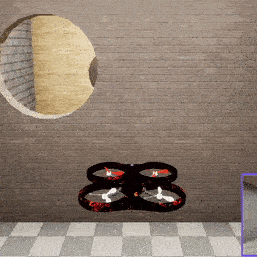 Autonomous UAV Navigation via Deep Reinforcement Learning Using PPOBilal KabasIn 2022 30th Signal Processing and Communications Applications Conference (SIU), 2022
Autonomous UAV Navigation via Deep Reinforcement Learning Using PPOBilal KabasIn 2022 30th Signal Processing and Communications Applications Conference (SIU), 2022In this paper, a computer vision-based navigation system is proposed for autonomous unmanned aerial vehicles (UAV). The proposed navigation system is based on a deep reinforcement learning-based high-level controller. In this paper, proximal policy optimization (PPO), which is a deep reinforcement learning method, is used to train the artificial neural network in an end-to-end way using a continuous reward function. The proposed method has been tested on images obtained from different modalities (RGB and depth) in simulation environments that are created using Unreal Engine and Microsoft AirSim. For the navigation problem that this work is concerned with, a success rate of 96% has been obtained by using RGB cameras. Since RGB cameras are lighter than depth cameras and the trained artificial neural network has a parameter number less than 170.000, the proposed method is suitable to be deployed in micro aerial vehicles.
-
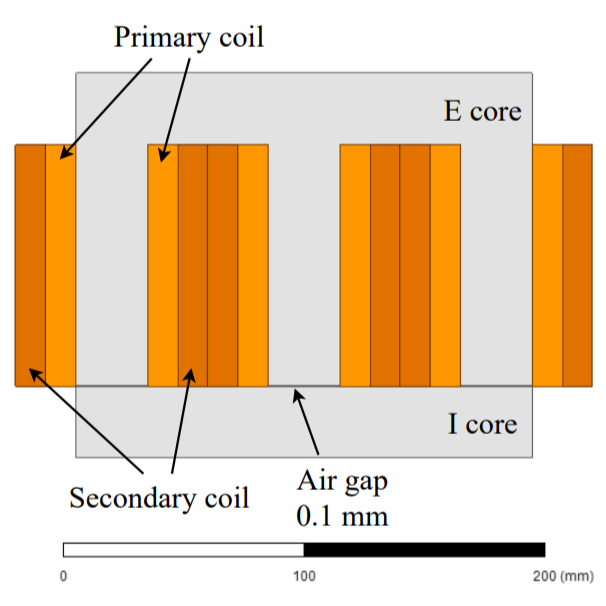 Design optimization of a three-phase transformer using finite element analysisAhmet Furkan Hacan, Bilal Kabas, and Samet OgutenarXiv preprint arXiv:2201.11769, 2022
Design optimization of a three-phase transformer using finite element analysisAhmet Furkan Hacan, Bilal Kabas, and Samet OgutenarXiv preprint arXiv:2201.11769, 2022Optimization of design parameters of a transformer is a crucial task to increase efficiency and lower the material cost. This research presents an approach to model a three-phase transformer and optimize design parameters to minimize the volume and loss. ANSYS Maxwell 2D is used to model the transformer and analyze it for different design parameters. The multi-objective differential evolution algorithm is used to find optimum design parameters that minimize the volume and loss. In this paper, we present the optimum design parameters for a 1 kVA transformer with a particular input and output voltage specification. The transformer with these optimum design parameters is then tested for different loading conditions and power factor values. The results show that the maximum efficiency is obtained for 75% loading condition with unity power factor. As the power factor decreases, the efficiency decreases as well.
2021
-
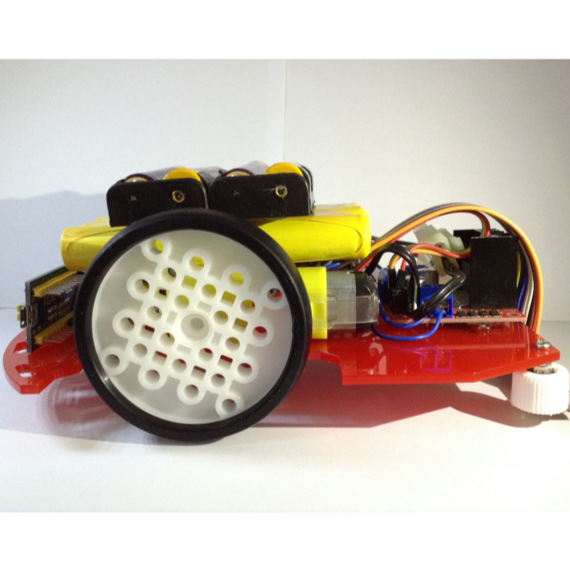 PID Controller Optimization for Low-cost Line Follower RobotsSamet Oguten, and Bilal KabasarXiv preprint arXiv:2111.04149, 2021
PID Controller Optimization for Low-cost Line Follower RobotsSamet Oguten, and Bilal KabasarXiv preprint arXiv:2111.04149, 2021In this paper, modification of the classical PID controller and development of open-loop control mechanisms to improve stability and robustness of a differential wheeled robot are discussed. To deploy the algorithm, a test platform has been constructed using low-cost and off-the-shelf components including a microcontroller, reflectance sensor, and motor driver. This paper describes the heuristic approach used in the identification of the system specifications as well as the optimization of the controller. The PID controller is analyzed in detail and the effect of each term is explained in the context of stability. Lastly, the challenges encountered during the development of controller and robot are discussed.
-
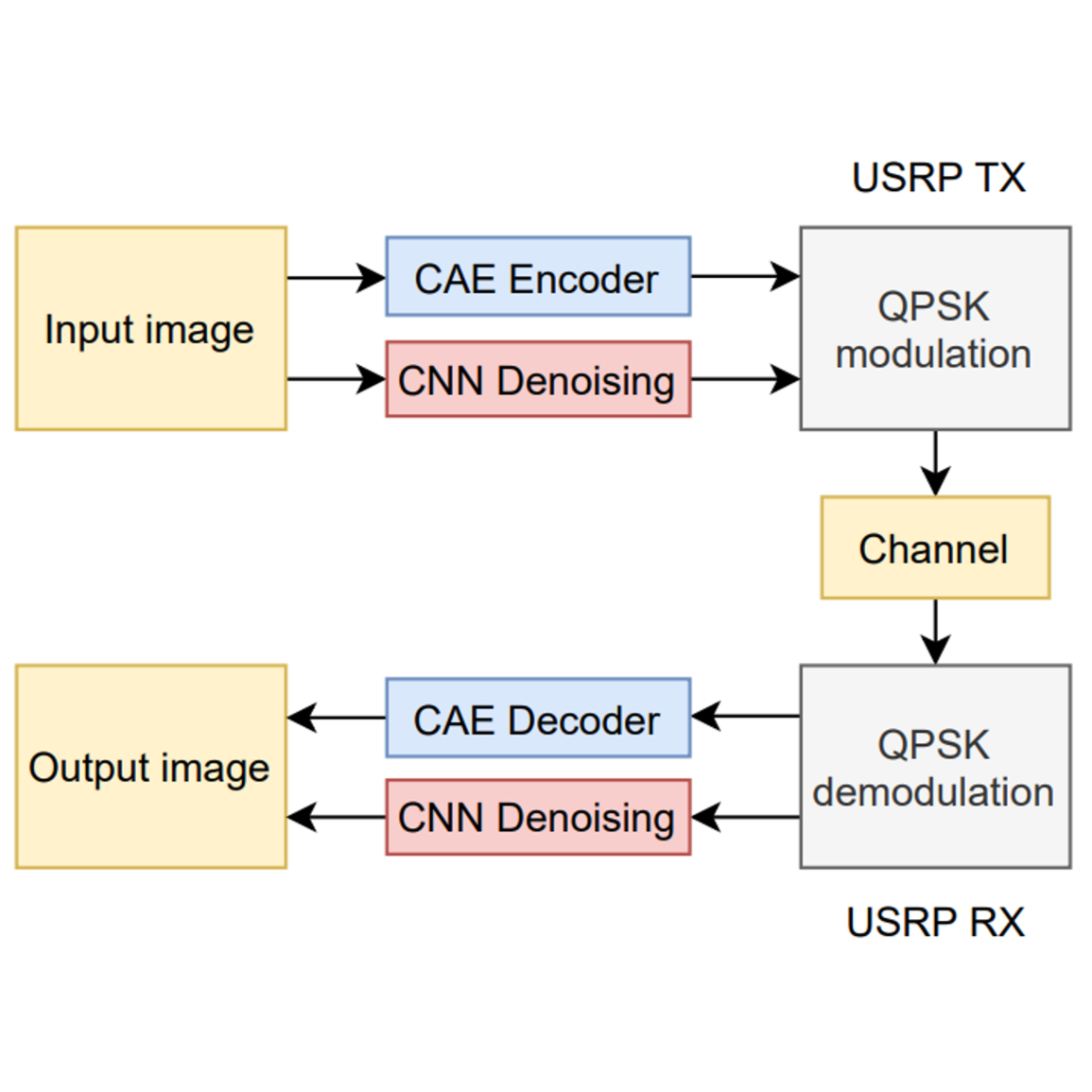 Optimization of QPSK-Based Digital Communication Systems Using CAE Compression and CNN DenoisingBilal Kabas, and Samet Oguten2021
Optimization of QPSK-Based Digital Communication Systems Using CAE Compression and CNN DenoisingBilal Kabas, and Samet Oguten2021In this research, deep learning methods are used for optimization of QPSK-based communication systems. We propose a convolutional autoencoder based lossy image compression technique to increase data rate. We also propose a ResNet classifier to analyze the performance of the CAE compressor. This research also presents a CNN denoiser architecture for removing additive white Gaussian noise (AWGN) from images. In this research, we conducted performance analysis of filters by using PSNR (peak-signal-to-noise-ratio) and SSIM (structural similarity index measure) evaluation metrics. Experimental results demonstrate that our CNN denoiser model outperforms classical image filtering techniques which are Gaussian and Wiener filtering based on SSIM values. Our QPSK implementation includes root-raised-cosine filtering for pulse shaping and matched filtering to improve bit error ratio as well as to minimize intersymbol interference (ISI). It also has an adaptive equalizer filter to eliminate the ISI caused by the filtering effect of the communication channel. The code for this research is available on GitHub: github.com/bilalkabas/QPSK-with-CAE-Compressor-and-CNN-Denoiser.
2020
-
 A Comparative Analysis of an XOR-XOR Based 18-Transistor Full Adder CellBilal Kabas2020
A Comparative Analysis of an XOR-XOR Based 18-Transistor Full Adder CellBilal Kabas2020This research presents a comparative analysis between an XOR-XOR based full adder cell and a fully complementary CMOS circuit. The two full adders have been reviewed and the design differences have been discussed. Subsequently, both circuits have been simulated in LTSpice by using model parameters for BS170 and BS250 MOS transistors. The aim of the research is to reveal the performances of the circuits through delay and power dissipation analyses. In order to get more precise results, LTSpice commands have been used to measure both propagation delays and power dissipations. The analysis has been conducted for 16 different input combinations in both circuits. The proposed full adder has been compared with the fully complementary CMOS circuit. The results show that the standard circuit has lower propagation delays and lower power dissipation levels than that of the proposed circuit. However, it has been found that the main reason of the unsatisfactory performance of the proposed circuit is the pull-down resistors that are added to the circuit as a part of necessary modifications.